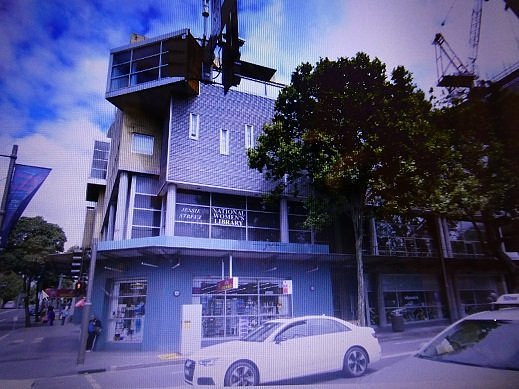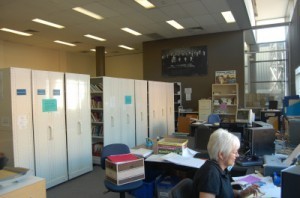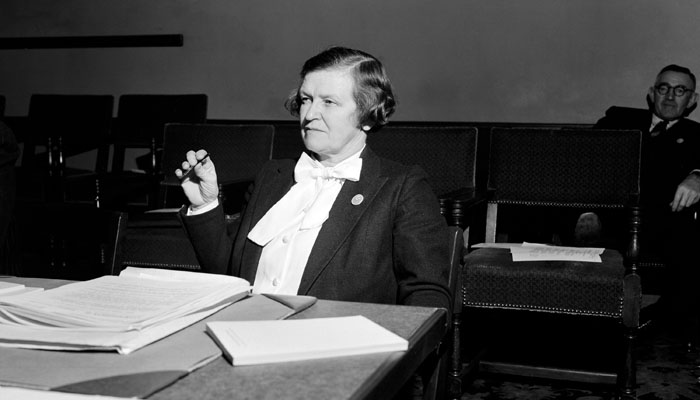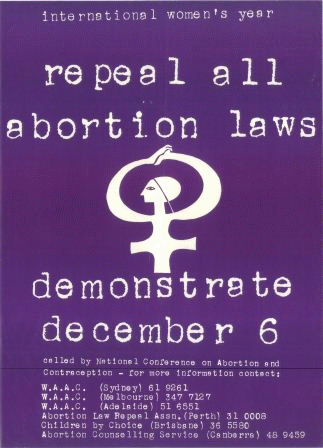Esther Whitehead
For my history project I am working with the Jessie Street National Women’s Library. Hidden away amidst the lively Ultimo community centre, between a very competitive table tennis club and a childcare centre.

The library is fully run by volunteers, many of them retirees who are more than willing to tell you stories of their involvement with feminism, the early women’s movements and the history of the library. So long as you’re generous with the cups of tea these women are generous with their stories.

Many spoke of the history of the library. The library is named after Jessie Street an early Australian feminist, women’s rights campaigner and an inspiration that many of the volunteers hold dear. A photo of her in black a white is printed on a large canvas frame, the only woman at a conference table of men.

Jessie was forward thinking for her time and campaigned for the rights of all women. She advocated against discrimination of Aboriginal People. She was involved in gathering signatures for petitions for the 1967 referendum. Before theories of intersectionality existed, even in academic circles, Jessie Street fought for the most marginalised, an inclusive campaigner for peace, for women, for Aboriginal People, for everyone.
The library was opened in 1989, to commemorate the life of Jessie Street almost 20 years after her death. This is an interesting part of the library’s history, it was built to commemorate an individual, but has grown to be so much more than that. It is now a specialist library that holds many rare books, as well the collections from defunct women’s organisations that have sadly lost funding and collapsed over the decades.
The library holds material related to the kind of women’s history that Jessie Street was involed with, Australian feminist activism and the women’s liberation movement. However it is a broad collection including records on women in the Church and diaries from female migrants to Australia. The shelves are home to many forms of written work from a cookbook from a home economics teacher to government reports into the gender imbalance of Parliament. The remit of the library is anything that aids in telling the story of women, all women, no matter how ordinary their lives. However it only receives material based upon donations so it is not an all encompassing collection, it has blindspots and gaps. Most large donations come from feminists’ personal collections, which are left to the library in their will. So there are things that people don’t think to keep around, or more often, items that the children of these collectors don’t see as worthy of donation.
One of my favourite parts of the collection is the tapestry collection. These are short pieces of writing by women about their everyday lives. One powerful recount is the story of Antonina Komarowski who lived in Russia throughout Stalin’s rule. She recounts moving to Leningrad for University just before war broke out.
Some of my favourite artefacts are the serials, these include newsletters, zine and self published literature by feminism activists from 1960’s to 1970’s, the peak of second wave feminism. Multiple zines from the 1970’s contain titlesd like, What Every Woman Should Know About Sex. Followed
by pages of anatomy diagrams and information on contraception. Access to the knowledge I was taught in year 7 was once radical. We have come so far that the knowledge these women once fought to disseminate is now a mandatory part of the curriculum.
The library’s collection consists of more than just written works, it also has posters, pamphlets and banners. These were the tools activists used to campaign for many of the rights and privileges I enjoy today. From the sign of these posters you can imagine the marches, hear the protest chants and the anger and conviction. But some of the library’s artefacts tell stories of how progress is not linear, and in many ways women are losing the battle.
The wall opposite the entrance to the library is covered in posters, duplicates of those the library already has in its archive. One morning as I was waiting to be buzzed in, looking over these posters and one stood out. It was bright purple and read, “Repeal all abortion laws,” there was no date, but the top stated it was from International Women’s year.

So I googled it, thinking it would be recent, from the past decade or so, with abortion being such a controversial issue.
1975.
47 years ago. Women have been fighting for control over their own bodies.
Roe v. Wade was just overturned.
Maybe we need to remember these women of the past. So we can continue their fight.

Esther – a great piece of writing & a succinct survey of the JSNWL – nice work!